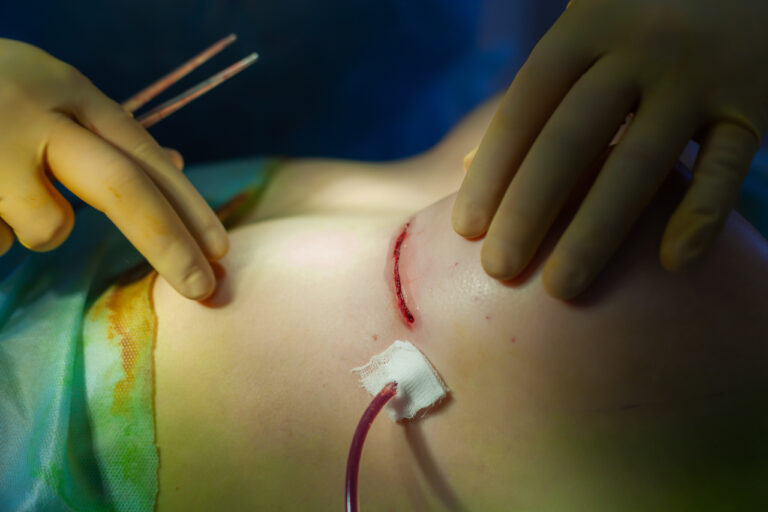Breast-conserving surgery (BCS) removes cancer while leaving as much normal breast as possible. Usually, some surrounding healthy tissue and lymph nodes also are removed.
Breast-conserving surgery is sometimes called lumpectomy, quadrantectomy, partial mastectomy, or segmental mastectomy depending on how much tissue is removed.
After BCS, most women will have radiation therapy. Some women might also get other treatments, such as hormone therapy and/or chemotherapy.
Side effects of BCS may include pain, a scar and/or dimple where the tumor was removed, a firm or hard surgical scar, and sometimes lymphedema, a type of swelling, in the arm.

BCS might be a good option if you:
Are concerned about losing a breast
Are willing to have radiation therapy.
Have not already had that breast treated with radiation therapy or BCS
Have only one area of cancer in the breast, or multiple areas in one quadrant (multifocal) that are close enough to be removed together without changing the look of the breast too much
Have a tumour smaller than 5 cm (2 inches), which is also small relative to the size of the breast.
Are not pregnant or, if pregnant, will not need radiation therapy immediately (to avoid risking harm to the fetus)
Do not have a gene mutation (change) such as a BRCA or ATM mutation, which might increase your chance of second breast cancer.
Do not have certain serious connective tissue diseases such as scleroderma or Sjögren's syndrome, which may make you very sensitive to the side effects of radiation therapy
Do not have inflammatory breast cancer.
After surgery, a doctor, called a pathologist, will look closely at the tissue that was removed in the lab. If the pathologist finds no invasive cancer cells at any of the edges of the removed tissue, it is said to have negative or clear margins.. If cancer (invasive or DCIS) cells are found at the edge of the tissue, it is said to have a positive margin.
Having a positive margin means that some cancer cells may still be in the breast after surgery, so the surgeon often needs to go back and remove more tissue. This operation is called a re-excision. If cancer cells are still found at the edges of the removed tissue after the second surgery, a mastectomy might be needed.
Taking pain medication
Caring for the bandage (dressing) over your incision, surgical drain and stitches.
Recognizing signs of infection-fever, increased redness around the incision, and pus draining from the incision.
Exercising your arm ( In case SLNB or ALND was performed)
Recognizing signs of lymphedema ( In case SLNB or ALND was performed)
You can wear a breast prosthesis or bra after the wound heals.